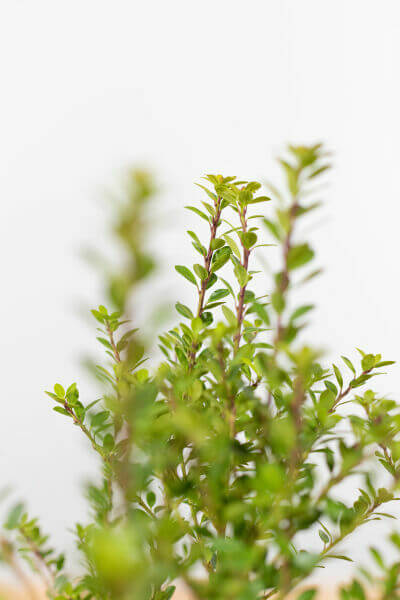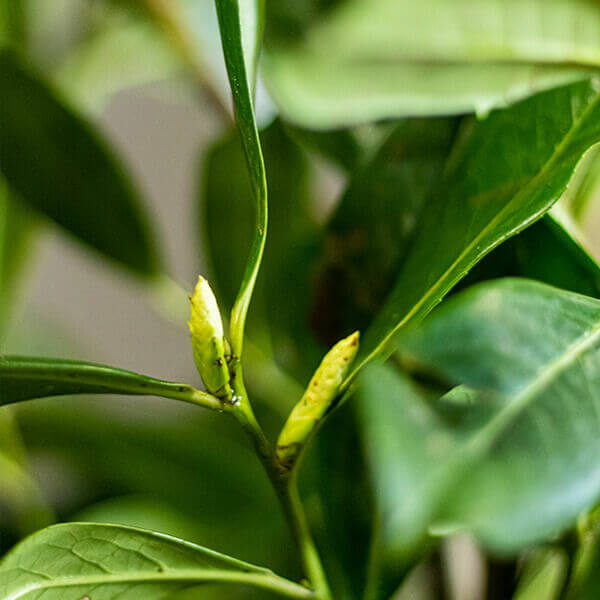Best Hedge Plants For Informal Hedges
Best Hedge Plants For Informal Hedges
Blog Article
Hedge Plants For Summer Blooms
Boost your garden's appeal with lush hedge ranges such as Yew (Taxus), Thuja, Laurel, Photinia, and Bamboo, celebrated for their structural stability and ecological benefits.
Yew and Thuja supply evergreen protection and winter season resilience, while Laurel provides rapid development and broad, fragrant leaves.
Photinia adds seasonal beauty with its vibrant red foliage, and Bamboo lends a low-maintenance, tranquil atmosphere.
These hedges improve air quality, minimize sound, and create tranquil, private areas.
Appropriate planting, spacing, and upkeep ensure vigorous development and eco-friendly harmony.
Explore how these lavish ranges can elevate your garden's beauty and wellness.
Key Takeaways
Transform Your Garden With Lush Hedge Ranges
- Select Yew for its thick, evergreen growth and unrivaled durability.
- Go with Laurel for its fast growth and broad leaves, guaranteeing fast personal privacy.
- Pick Photinia for its lively seasonal foliage, which turns a striking dark red.
- Utilize Bamboo for a low-maintenance, winter-hardy hedge with aesthetic appeal.
- Space plants 2-3 per meter and prune regularly for ideal growth and health.
Popular Hedge Plants
When transforming a garden with rich hedge ranges, it's necessary to consider popular hedge plants such as Yew, Thuja, Laurel, and Photinia due to their unique characteristics and benefits.
Yew (Taxus) is highly esteemed for its longevity and thick, green development, making it a prime option for enduring landscapes.
Thuja is noted for its evergreen foliage and robust winter season strength.
Photinia includes seasonal vibrancy with red leaves that darken with time, developing vibrant visual appeal.
Laurel provides quick development and aromatic, broad leaves, suitable for quick personal privacy.
Additionally, Bamboo is an excellent option for atmosphere, providing a low-maintenance, winter-hardy choice that improves the garden's aesthetic with its elegant, swaying walking canes.
These choices accommodate a variety of horticultural requirements and choices.
Benefits of Garden Hedges
Garden hedges offer a multitude of advantages, making them a valuable addition to any landscape. These natural barriers are affordable to execute and offer significant wind defense, improving air blood circulation and adding to noise reduction. The thick foliage of hedges like Thuja and Beech guarantees privacy by blocking visibility, developing a remote and peaceful environment.
Hedges likewise play a crucial role in microclimate guideline, offering a steady environment that promotes plant growth and lessens temperature variations. Their elaborate leaf structures filter toxins, improving air quality and adding to a healthier garden community.
Moreover, hedges excel in sound reduction, taking in and deflecting acoustic waves to lower ambient noise levels. This double functionality of offering both visual and acoustic privacy boosts the overall harmony and aesthetic appeal of any garden.
Planting and Maintenance Tips
For an effective hedge, careful preparation of the planting area is important. Make sure the soil has proper pH and drain to support strong root advancement.
Space the plants appropriately for the selected types. Water the hedge frequently during its initial development stage, changing as needed with seasonal changes.
Execute a organized pest control and disease prevention technique, utilizing chemical or organic treatments when required. Routinely examine for aphids, termites, and fungal infections.
Apply mulch to maintain wetness and reduce weeds. Seasonal pruning promotes dense growth and air circulation, important for plant health.
Following these guidelines will help you cultivate a dynamic, well-kept hedge that boosts the appeal of your garden.
Spacing and Cutting Standards
Spacing and Cutting Standards
Correct spacing and cutting are vital for cultivating healthy, aesthetically appealing hedges. Appropriate spacing makes sure each plant gets enough nutrients, light, and air flow.
Follow these standards for ideal hedge maintenance:
- Spacing: Position hedge plants 2-3 plants per meter to encourage robust growth.
- Pruning Methods: Regular pruning is vital for preserving wanted hedge height and shape. Trim brand-new development in summer season and cut down older wood throughout winter.
- Seasonal Care: Adjust trimming schedules and methods according to seasonal requirements to ensure plant health.
- Hedge Height: Frequently display and cut to preserve the desired hedge height and achieve consistent looks.
Sticking to these steps will ensure your hedge thrives, enhancing both the appeal and functionality of your garden.
Choosing the Right Hedge
Picking the Right Hedge
Picking the proper hedge includes assessing aspects such as mature height, foliage density, and ecological resilience. Successful hedge plant choice needs understanding each types' growth characteristics and site-specific versatility.
For instance, Yew (Taxus) offers outstanding durability and thick development, while Thuja is noteworthy for its winter season resilience. Furthermore, thinking about upkeep requirements is crucial; fast-growing species like Laurel or Privet demand regular trimming, whereas low-maintenance choices like Bamboo or Ivy may be more suitable for those looking for very little maintenance.
Ecological aspects such as soil type, light schedule, and wetness conditions should also guide the selection process. This careful approach ensures the picked hedges will thrive, offering both visual and functional benefits to the garden landscape.
Shipment and Planting Guidance
To guarantee your hedge plants grow, they must be delivered by specialized carriers and planted immediately upon arrival.
Follow these essential steps for effective planting:
- Soil Preparation: Improve the soil with raw material to improve drain and nutrient material.
- Planting Depth: Create a trench twice the width and equal to the depth of the root ball.
- Watering Methods: Water completely after planting, keeping the soil regularly moist but not filled.
- Mulching: Use a layer of mulch to maintain wetness and suppress weeds.
Customer Support and Service
Provided the important function of prompt help in horticultural pursuits, our customer support team is available six days a week through telephone, email, and social media to offer expert guidance and quickly deal with any concerns. Their dedication to quick reaction times guarantees client complete satisfaction by fixing questions connected to plant health, optimum planting techniques, and maintenance schedules.

Accessibility
Within two days
Within 24 hours
This comprehensive support group, strengthened by an outstanding 9.3/ 10 consumer ranking, highlights our dedication to boosting the gardening experience for every single client.
Frequently Asked Questions
For How Long Does It Take for Hedge Plants to Establish?
Hedge plants normally require one to three years to become fully established, with the exact duration differing by types and growing conditions.
Effective care during this crucial period is important for robust growth. Consistent watering, vigilant weed control, and appropriate fertilizer application are pivotal in promoting strong root advancement.
For instance, fast-growing types like Laurel may establish quicker, while slower-growing varieties such as Yew may take longer. Thorough upkeep accelerates the establishment process, resulting in healthy and thick hedges.
What Are the Finest Hedge Plants for Privacy?
The question of the finest hedge plants for personal privacy involves evaluating evergreen and deciduous alternatives.
Evergreen hedges like Thuja, Laurel, and Cypress offer year-round coverage, ensuring constant privacy.
In contrast, deciduous hedges such as Beech use seasonal privacy, shedding leaves in colder months.
Secret maintenance ideas for privacy hedges consist of routine trimming, fertilizing in spring, and correct spacing-- usually 2 to 3 plants per meter.
Additionally, constant watering and diligent weed elimination are important for promoting healthy, dense growth.
Can Hedge Plants Draw In Wildlife to My Garden?
Yes, hedge plants can attract wildlife to your garden by providing important benefits like shelter, food, and nesting sites, therefore enhancing regional biodiversity. For circumstances, yew, holly, and laurel are exceptional for bring in birds, while ivy supports a variety of insects.
However, it is necessary to keep in mind that there are some downsides, such as increased maintenance to manage bugs and routine maintenance. Carefully picking and preserving hedge varieties can assist stabilize these disadvantages and benefits, eventually fostering a vibrant and sustainable community in your garden.
Are There Any Blooming Hedge Plants Available?
Yes, there are flowering hedge plants readily available that can improve the beauty of your garden.
For instance, Elaeagnus, also understood as Olive Willow, produces fragrant white flowers in the fall, including a touch of elegance.
Photinia, another popular option, showcases vibrant red leaves that grow into a rich green, developing a dynamic visual impact throughout the seasons.
To ensure these plants grow, it's vital to practice proper pruning methods and seasonal upkeep, such as trimming brand-new development in the summer and cutting down in the winter season.
These measures will assist keep the health and aesthetic appeal of your flowering hedges.
How Do I Avoid Bugs in My Hedge Plants?
To prevent pests in hedge plants, use natural bug control techniques and maintain proper hedge care. Introduce useful bugs like ladybugs, which take advantage of damaging bugs, to produce a well balanced environment.
Frequently inspect your hedges for signs of problem and promptly remove any afflicted parts to avoid the spread. Make sure the health of your hedges by using balanced fertilizers and providing adequate water.
Make use of mulching to maintain soil wetness and appropriate spacing to decrease plant stress and promote robust growth. These practices jointly assist in lessening insect issues and keeping a healthy hedge.
Conclusion
In essence, picking the best hedge varieties such as Yew, Thuja, and Laurel can change any garden into a serene Additional reading haven. These plants provide year-round plant, improve aesthetic appeal, and deal useful advantages like noise reduction and wind protection.
Correct planting methods, accurate spacing, consistent watering, and seasonal trimming are essential for ideal growth.
Dependable shipment services and professional customer assistance ensure a smooth experience from purchase to planting, making it simpler than ever to raise your outside space.
Garden hedges use a wide variety of benefits, making them an important addition to any landscape. These natural barriers are affordable to carry out and offer considerable wind protection, improving air circulation and contributing to sound reduction. The dense foliage of hedges like Thuja and Beech makes sure privacy by blocking visibility, producing a remote and tranquil environment.

Pruning Techniques: Routine pruning is necessary for preserving desired hedge height and shape. Cut brand-new growth in summer and cut back older wood throughout winter.
Report this page